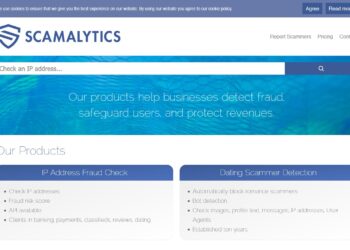Nowadays, IT environments and cyber hacking are growing more sophisticated. As organizational cybersecurity improves, hacking systems become resilient. This resiliency manifests in cyberattacks taking place from both inside and outside of the company.
Recorded data breaches worldwide are increasing at an alarming rate. Businesses are now grappling with mitigating the situation and preventing their companies from succumbing to it.
Breaches cost a lot of money for companies. In 2022, the average data breach cost in the US was $9.44 million, against $9.05 million in 2021. Meanwhile, the global average data breach cost is $4.35 million.
Companies now require enhanced and comprehensive strategies to protect them from cyber threats. Knowing and understanding the available threat detection tools can help prevent cyber attacks before they even happen to your company.
Types of Cyber Attacks
Cyber attacks modify or steal and destroy data and computer systems. These malicious threats primarily target related infrastructures for money and disrupt digital operations. Common cyber threats are computer viruses, malware, phishing, trojan horses, and password attacks.
Denial of Service (DoS) and Distributed Denial of Service (DDoS)
Denial of Service (DoS) and Distributed Denial of Service (DoS) are ploys to make a digital system or network inaccessible by overloading it with massive traffic. This attack often targets services relying on computer systems like emails, websites, and online banking.
The difference between DoS and DDoS is the number of systems they attack. DoS involves a single attacker, while DDoS has several hosts working simultaneously, making detecting and breaking it much more challenging. The former is easier to identify since it comes from one location only.
Ransomware
Ransomware is a form of malware. It uses software or an app to lock an individual or organization’s confidential data until the target pays for its release. It prevents users from accessing their files.
While the data remains intact, hackers use the lockout as a misdirection to buy time. It distracts the security team’s attention by thinking there’s an actual infection, enabling invaders to infiltrate a deeper database.
Unfortunately, there is no guarantee that the data is safe even if the company pays the ransom.
Man in the Middle (MITM)
Man in the Middle (MITM) is a type of attack that strikes during a two-party transaction. It hijacks a legitimate session by mimicking one of the parties to steal information.
When the “man” intercepts the transaction, they can acquire information like login and account details or debit and credit card numbers. Typical victims of this are financial companies and e-commerce sites.
Types of Threat Detection Technology and Tools
Advanced threat protection technologies used to detect cyber attacks come in various forms. A few of them are Cyber Threat Intelligence (CTI), Endpoint Detection and Response (EDR), Next-Generation Antivirus (NGAV), and Vulnerability Scanners.
When your organization identifies and prevents threats from penetrating computer systems, its capacity to do so is called threat detection. Your company’s threat detection effectiveness depends on the robustness of the cyber security operations.
User and Entity Behavior Analytics (UEBA)
User and Entity Behavior Analytics (UEBA) is a threat detection tool that collects, tracks, and analyzes user information and activity. It uses algorithms to distinguish behavior irregularities within the digital network system.
UEBA identifies patterns of any suspicious operations that may damage the system. It examines human network activity and machines. As it keeps an eye out on potential threats, security teams acquire necessary insights about the attack’s performance. Note that the UEBA design precludes active threat intervention.
UEBA is beneficial for your company since it detects various cyber attacks like DDoS and insider threats. This lowers the risk of damages and further harm to your enterprise.
Deception technology
Deception Technology is a cyber defense that distributes decoys across the system. These decoys are natural asset baits that mirror the appearance of domains, databases, servers, applications, files, and information.
Tools like magic link can be used alongside deception technology as they can remove bot attacks and prevent attackers from taking over your account.
When using deception technology, distinguishing between what’s real and fake isn’t possible. As attackers interact with the traps, it triggers the notification system that begins recording their actions. This way, your company has the power to respond immediately.
Wasting the time of attackers is the pivotal component of this threat detection tool. While they exhaust themselves trying to break through, your company actively gathers valuable intelligence to fire back.
Ransomware protection technology
Ransomware analytic solutions spot any abnormal activity and instantly block them. Like deception technology, they use asset traps to distract attackers. It enables the company to retaliate by employing the same ransomware tactics used by attackers.
This technology eliminates threats from any infected machine, unlike other tools. It automatically works to prevent ransomware from encrypting your company’s important files and information databases. Aside from instant blocking, it can create playbooks to broaden your company’s system security.
Your Company Needs Multifaceted Cybersecurity Strategies
Dave Chappelle said, “Modern problems require modern solutions.” No organization is exempt from cyber threats. Your enterprise must know about the different types of cyber threats and the necessary threat detection tools.
The world is moving fast, and so are hackers. You need to do the same to keep up and protect your company’s assets.






